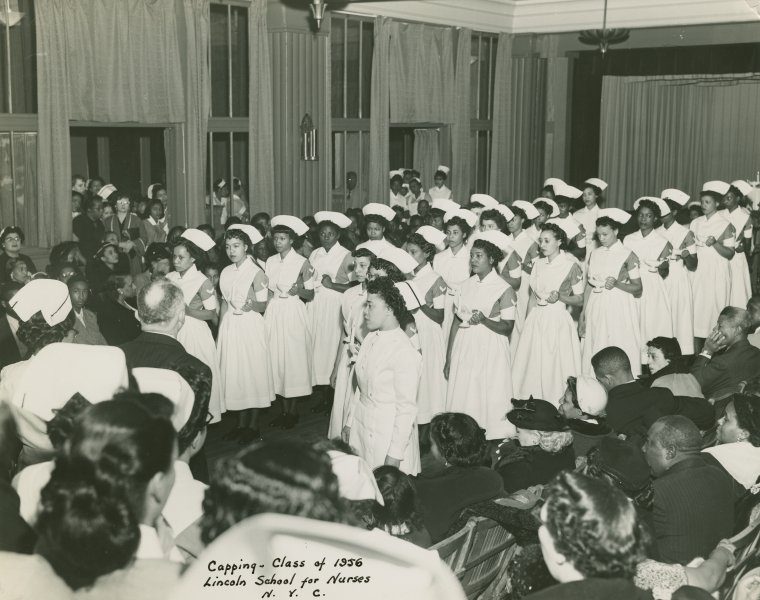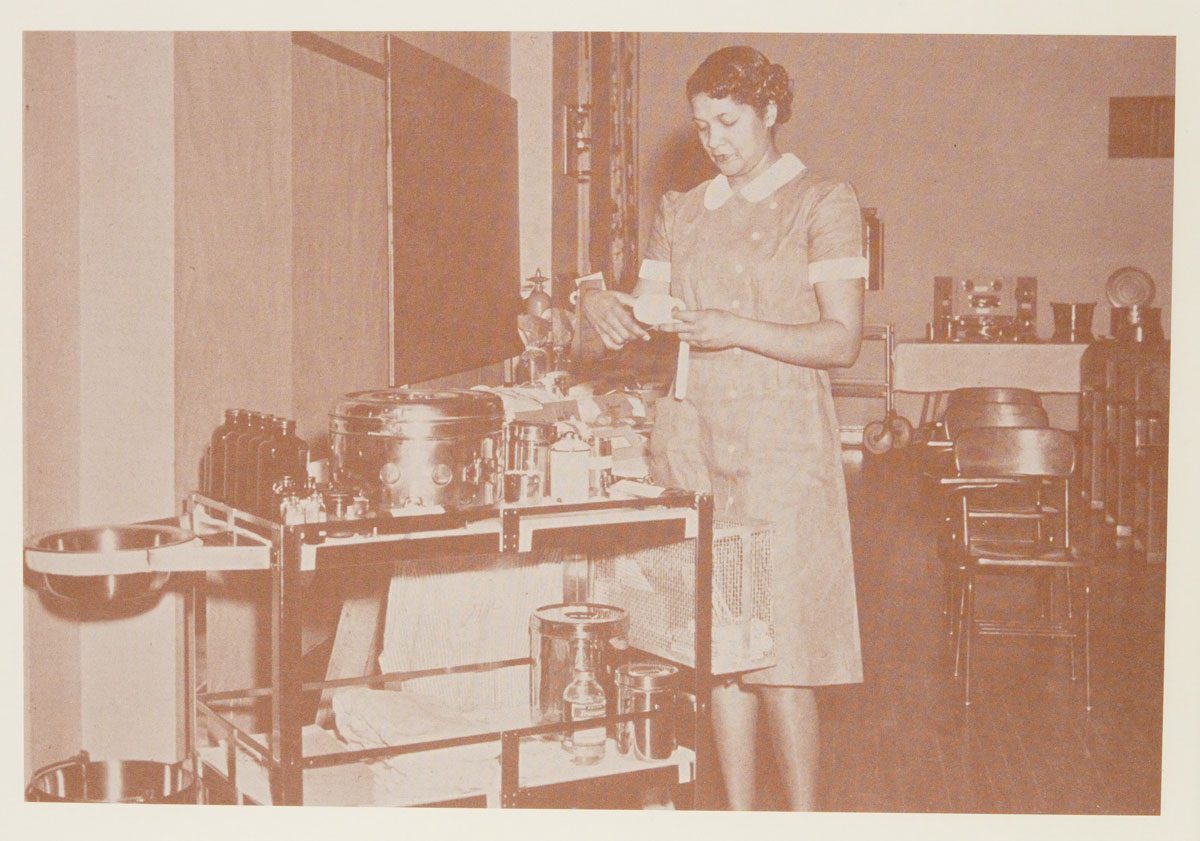
NYPL Schomburg Center for Research in Black Culture | b11922868
Claiming Space at Seaview
Advancements in treatments for tuberculosis, research in which Seaview played an important role, would not come until the mid-1900s. Prior to that, working on a tuberculosis ward posed a considerable risk to staff. In fact, by 1948 Lincoln School for Nurses would only allow students with a positive tuberculosis skin test reaction to work at Seaview.
The Lincoln School was founded in the Bronx in 1898 as one of a dozen nurse training programs in the United States specifically for Black nursing students. The school began a partnership with Seaview Hospital in 1930. Racism within the medical field caused discrimination against Black candidates for medical training, who were often denied positions in schools and hospitals that were resistant to integration. Through the activism of Black communities across the United States, dedicated hospitals and training programs rose up to respond to this need. Eventually, public hospitals began to integrate, but on the job market white doctors and nurses had more options than Black medical professionals. “Many black nurses…accepted those assignments avoided by white nurses, the care of chronically or terminally ill patients,” writes historian Darlene Clark Hine. Indeed, from the 1930s through 1960s, Black women made up the majority of the nursing staff at Seaview Hospital.

c. 1955 Seaview Anniversary Ball Journal (2004) Collection of the Staten Island Museum
In December 1933, an article in The New York Age newspaper estimates that of the three hundred nurses on staff at Seaview that year, two hundred and fifty were Black. At this time, Seaview Lincoln, Harlem, and Riverside were the only hospitals in New York City hiring black graduate nurses. Even within integrated hospitals, Black nurses were often barred from administrative or managerial positions, with the minority of white nurses on staff occupying a majority of the supervisory roles. This led to accusations in the press of discrimination on the part of white administrators toward Black nurses and collective action by Black nurses to push for equal access to the breadth of career opportunities available within the City’s hospitals.
Virginia Allen Audio Stop 3: “These were Nurses”

1945-1947 Collection of NYC Municipal Archives | dpc_2469